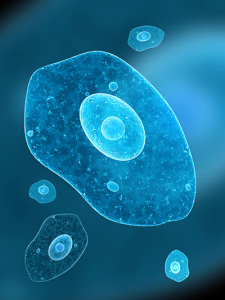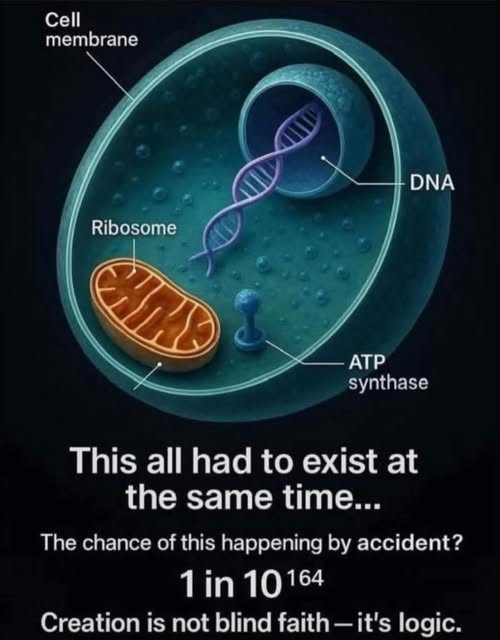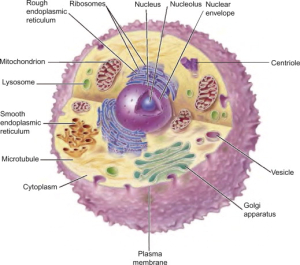The Impossible Cell: Why Creation Is the Only Logical Answer
Jason Ashe
Imagine a single living cell — a microscopic universe of precision, order, and purpose. Inside that tiny space exists a world so intricate that even the most advanced human technology cannot come close to reproducing it.

Within the cell, the DNA carries the blueprint of life, the ribosomes read and translate that code, the ATP synthase generates the energy that powers every function, and the cell membrane protects and regulates everything that enters and leaves.
For life to exist, all of these components must work together perfectly — at the same time. Without DNA, there would be no instructions. Without ribosomes, the DNA could not be read. Without ATP synthase, there would be no energy to sustain the system. And without the cell membrane, everything would fall apart instantly.
In other words, a cell cannot gradually “evolve” into existence piece by piece. It’s an all-or-nothing system — a fully functioning design that demands coordination, structure, and foresight.

Some estimates place the odds of a living cell forming by random chance at 1 in 10¹⁶⁴, but even that number is conservative. The famed astrophysicist Sir Fred Hoyle and mathematician Chandra Wickramasinghe calculated the likelihood of life forming spontaneously at roughly 1 in 10⁴⁰,⁰⁰⁰, calling it “an outrageously small probability that could not be faced even if the whole universe consisted of organic soup.”
Similarly, Dr. Harold Morowitz of Yale estimated the chance of a single bacterium assembling by random chemical reactions at 1 in 10¹⁰⁰,⁰⁰⁰,⁰⁰⁰,⁰⁰⁰…, a number so incomprehensible that it essentially equals zero. Even forming a single, medium-sized functional protein by random chance is estimated at about 1 in 10⁷⁷ — a number so vast it dwarfs the 10⁸⁰ atoms that exist in the entire universe.
No honest scientist would argue that such odds are realistic. Many secular researchers now admit that chance alone cannot explain the origin of life. Some have turned to speculative ideas like “panspermia” — the notion that life came from outer space — but even that merely pushes the problem farther away without solving it.

The evidence all points in one direction: design. A living cell operates like a finely tuned factory — with digital code, energy production, waste management, and information systems all working in harmony. Design always points to a Designer.
Creation is not blind faith; it’s logic. Every blueprint requires an Architect. Every system requires intelligence. And every cell bears the unmistakable fingerprint of its Creator.
As Scripture declares, “For since the creation of the world God’s invisible qualities—his eternal power and divine nature—have been clearly seen, being understood from what has been made” (Romans 1:20).
The cell is not an accident. It’s a masterpiece — and its Designer is God.


